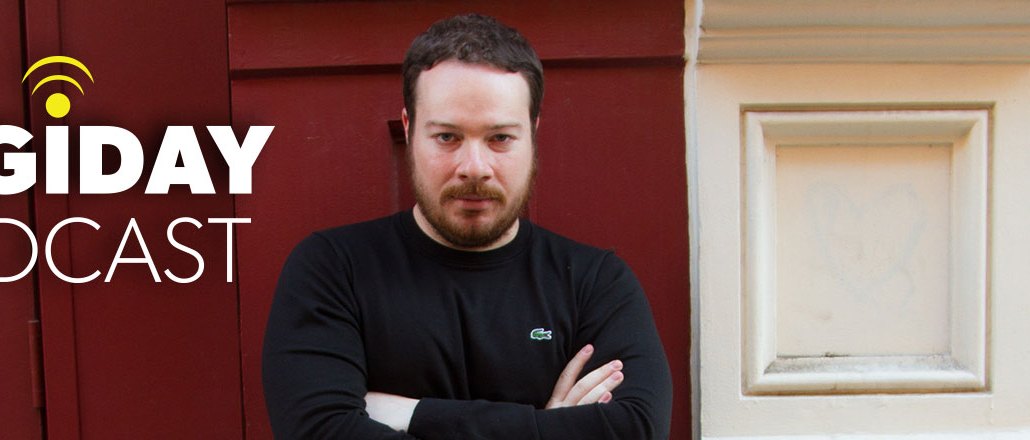Bustle’s Bryan Goldberg: ‘There’s still so many dollars trapped in print’

Subscribe: iTunes | Stitcher | RSS
For all the talk of digital transformation at magazine companies, Bustle CEO Bryan Goldberg believes they haven’t gone nearly far enough, mostly because the market for magazine advertising hasn’t collapsed like newspaper ads.
“The decline of print all these years hasn’t been for lack of talented writers,” Goldberg said on this week’s episode of the Digiday Podcast. “It’s because these businesses haven’t been terribly well-managed. There’s been time to change, years to transition from print to digital. Print is still a good business. It used to be an amazing business. Some of the bigger magazine companies haven’t transitioned as fast as they should have because there’s still so many dollars trapped in print.”
Goldberg, who was part of the founding team at Bleacher Report, is crowing about how Bustle, the young women’s lifestyle digital media company he founded three years ago, has tripled revenue this year to $30 million and is now at break even — with real profitability to come in 2017. That’s more than most well-funded digital media companies can say.
Below are highlights from the conversation, lightly edited for clarity.
Being cool is overrated
Bustle is not about appealing (only) to those in Brooklyn and urban areas. It aims to be “authentic” and “inclusive” in its tone and coverage, rather than present some kind of cool lifestyle to aspire to, he said.
Ad position: web_incontent_pos1
“Bustle if for the everywoman,” he said. “We never said we wanted to be super cool. We never wanted to be the site for the it girl. We want to be for women who love themselves but weren’t at the popular kids table at the cafeteria.”
Scale is underrated
The get-big-or-go-home approach to digital media has given way to lots of talk about focus and the virtues of being niche. That’s hogwash, at least for building big companies serving big categories for big advertisers, Goldberg said. For him, scale starts at 20 million users per month, as measured by comScore, not cobbled together from social platform users.
“You need real scale,” he said. “Five million, 10 million, that’s really impressive, but 20 million means you’re really reaching a lot of people. To your brand partners, you can spread a message at tremendous scale. You also have to reach a particular type of person, split along gender, age or household income. One of the challenges of the easy Facebook era people figured out how to drive massive scale, but they were getting everybody. That’s not going to be interesting to brands.”
Client service is a killer app for media companies
Many try to make media mysterious, based on mastering algorithms and cobbling together proprietary technology. But what’s overlooked is quite simple: client service. Doing what you say you’re going to do, as you grow, is critical, Goldberg said.
“If you’re just easy to work with, if you just answer your emails quickly and you’re not a pain, you handle the assets correctly and you work past 5 p.m., that goes a long way,” he said.
Ad position: web_incontent_pos2
The New York Times is “playing catch-up” to Mic
While The New York Times remains the pinnacle of reporting and has sped up digital innovation, it still has a ways to go, in Golberg’s estimation. Just as he saw ESPN and Sports Illustrated struggle to match the speed and nimbleness of Bleacher Report, the Times is “playing catch-up” to upstarts like Mic, he said.
“They could have done more,” he said. “Contrary to what some politicians are saying, it’s not failing or dying. There’s a lot to like about The New York Times. But there are new entrants in the field like Mic, like Vox.com, who are innovating and doing things that frankly The New York Times is playing catch-up or flat-out copying.”
More in Media

NewFronts Briefing: Samsung, Condé Nast, Roku focus presentations on new ad formats and category-specific inventory
Day two of IAB’s NewFronts featured presentations from Samsung, Condé Nast and Roku, highlighting new partnerships, ad formats and inventory, as well as new AI capabilities.

The Athletic to raise ad prices as it paces to hit 3 million newsletter subscribers
The New York Times’ sports site The Athletic is about to hit 3 million total newsletter subscribers. It plans to raise ad prices as as a result of this nearly 20% year over year increase.

NewFronts Briefing: Google, Vizio and news publishers pitch marketers with new ad offerings and range of content categories
Day one of the 2024 IAB NewFronts featured presentations from Google and Vizio, as well as a spotlight on news publishers.
Ad position: web_bfu